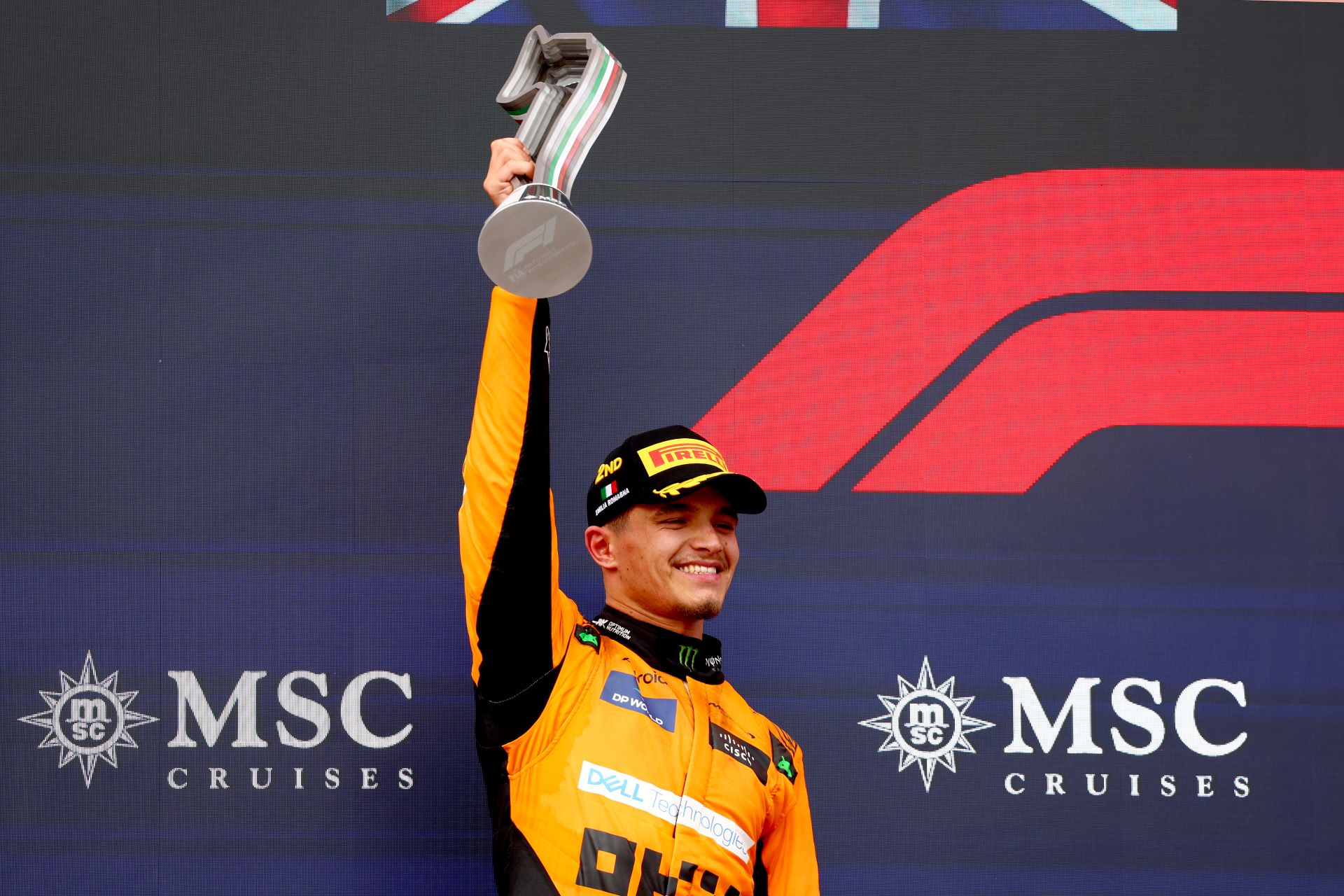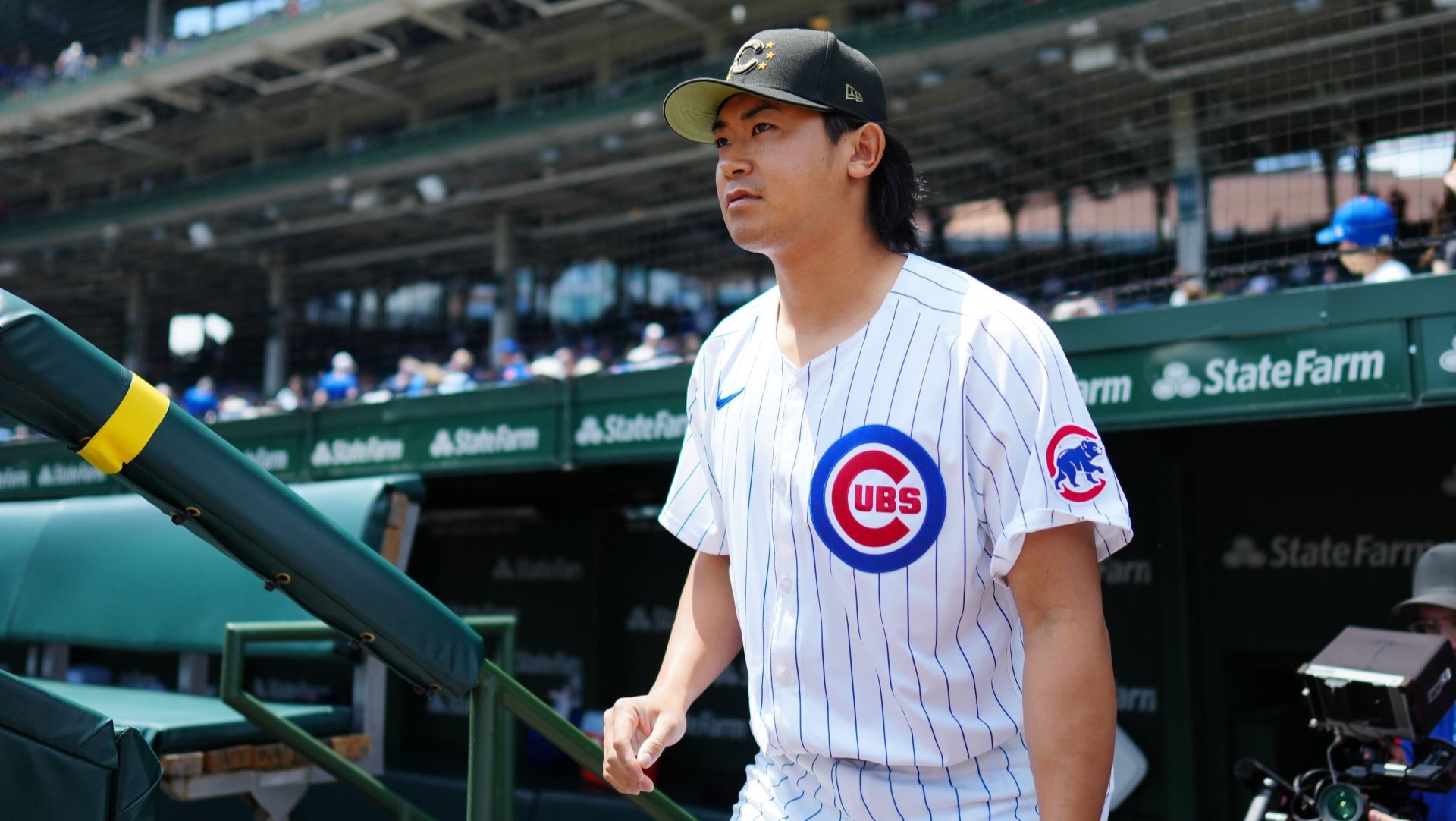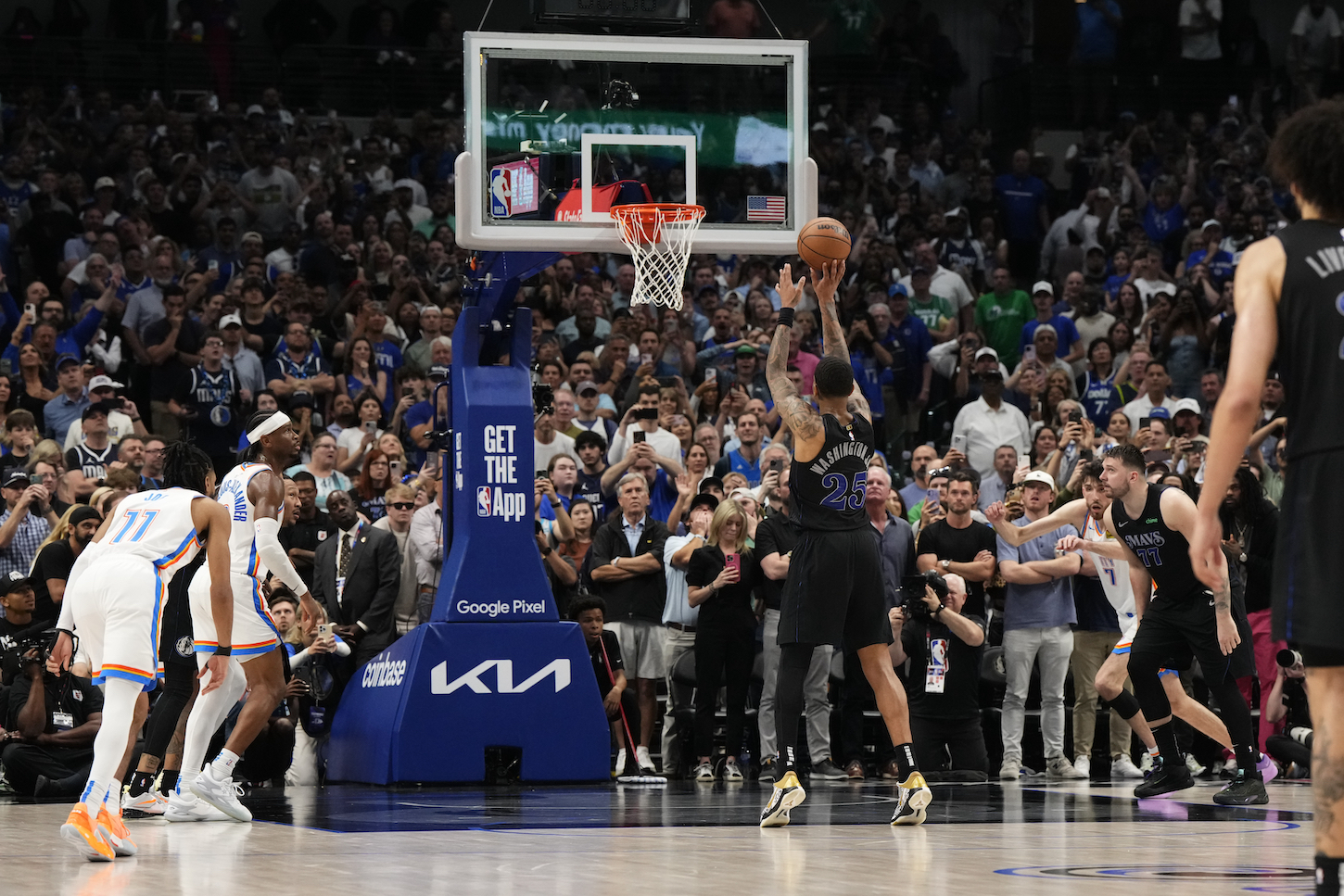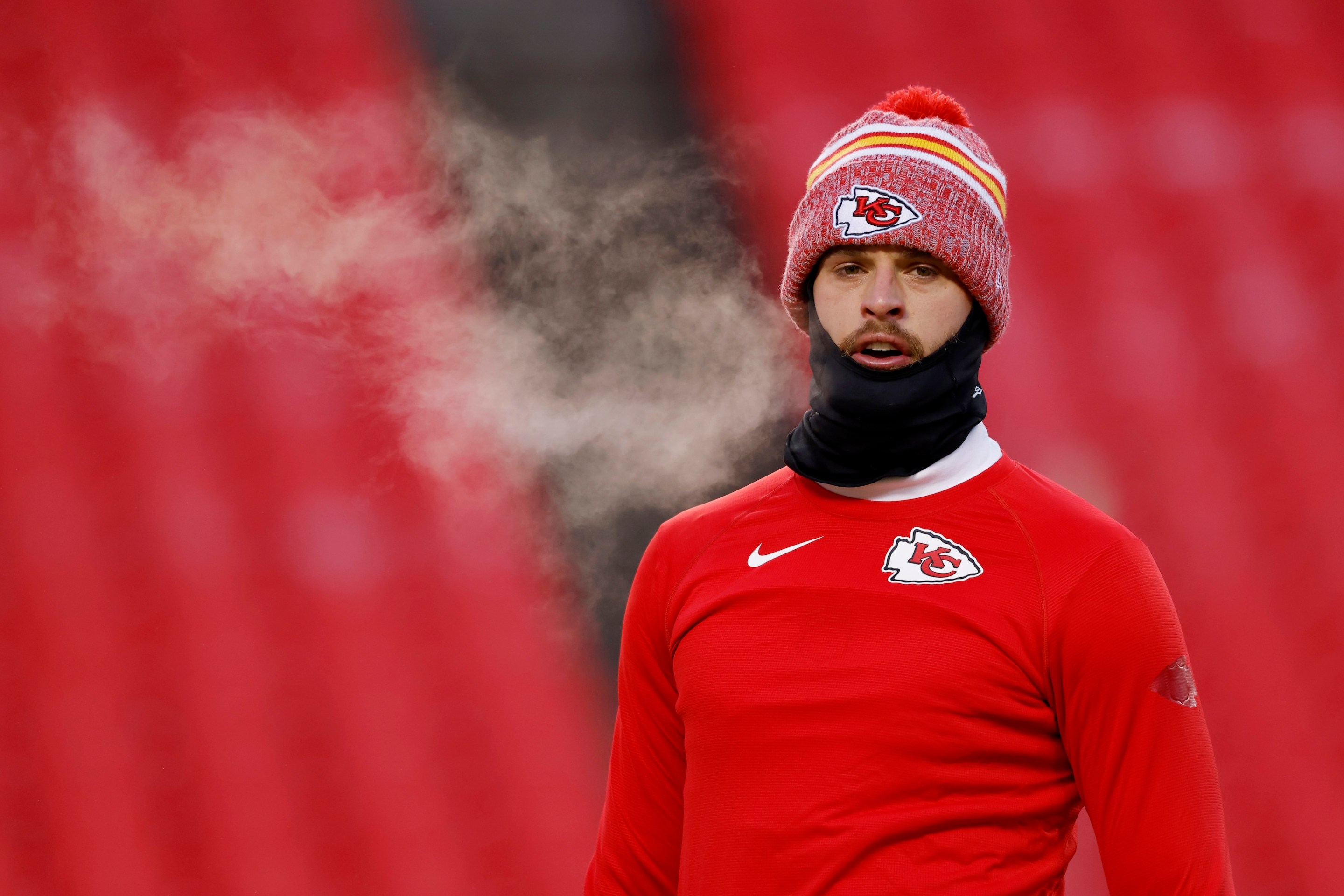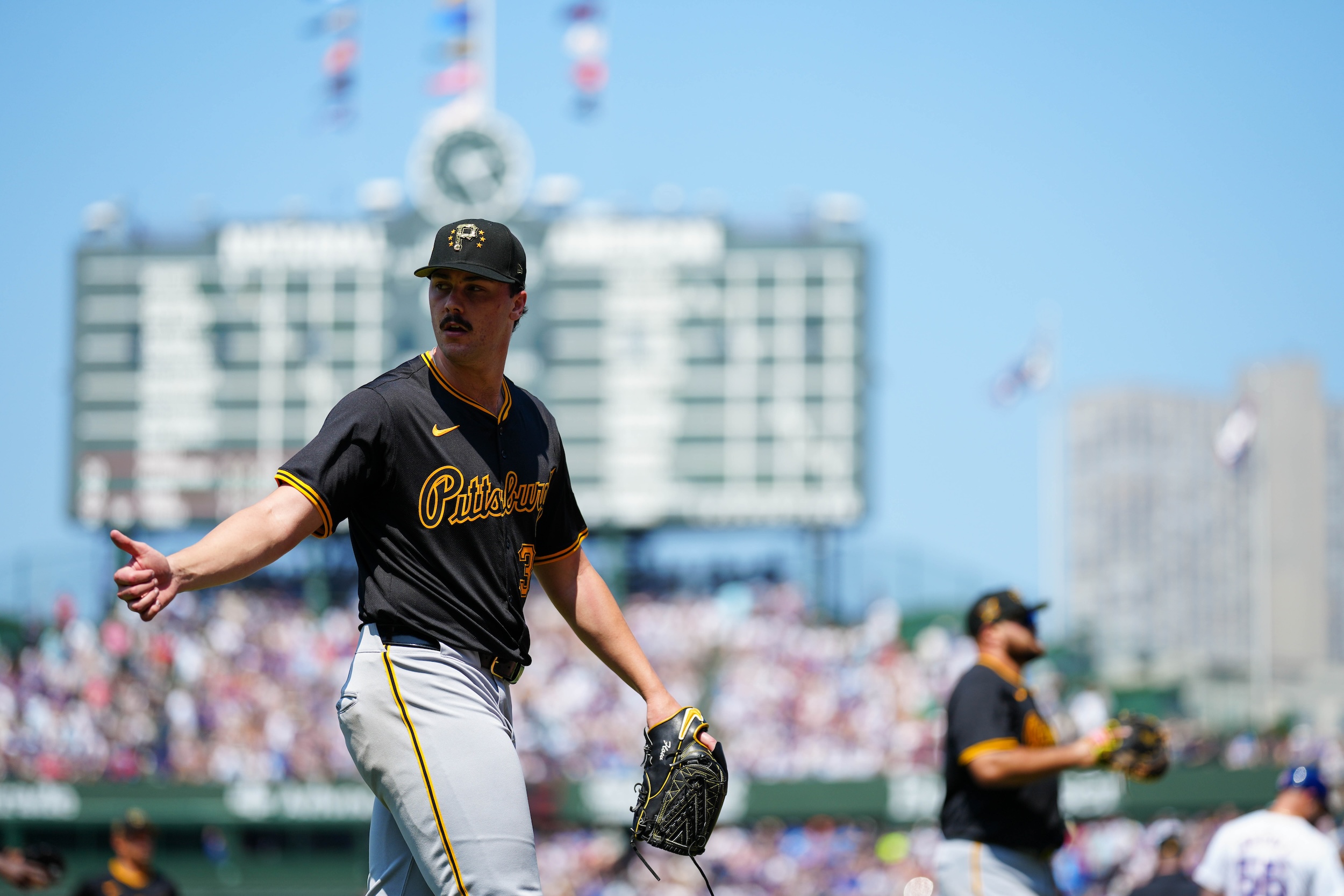Challengers asks some provocative hypothetical questions, many of which are broad and emotional in nature: What if a love triangle were remixed with a sports rivalry? What if a thwarted player-turned-coach could live vicariously through her player-turned-husband? What if an elite junior tennis prospect somehow had a convincing cigarette grip?
But more compelling are the movie's narrower, kookier questions: If a tennis court were played on a transparent surface, and we could stare at it from below, like sullen fish gazing up at the occupants of a glass-bottom boat, what would the baseline look like? What if we saw a rally from the ball's point of view? What if we could watch an acute knee injury close-up and hear it at gut-churning volume in a theater? Most ghastly of all: What if I had to look directly at a tennis pro's unsocked foot?
Director Luca Guadagnino, who has roughly the same relationship to subtlety as Jelena Ostapenko, was empowered to answer those questions throughout Challengers. He seems to grasp that tennis is a game of many sensory pleasures (plus occasional horrors), and that it offers up handy metaphors for love and striving. Occasionally his style can be smothering and on-the-nose, but I didn't begrudge him his choices here. Challengers mirrors the colossal feelings and momentum swings of a good tennis match, right down to the classic sensation of yelling out loud without knowing why you're yelling. Give or take a few treacly slow-mo shots, I was happy to let him cook.
While it wasn't Guadagnino's job to pin down the tennis itself—his job was conveying "a kinetic experience, an intimate experience"—I have lots of praise for the folks tasked with verisimilitude. That includes screenwriter Justin Kuritzkes, tennis consultant (and Coco Gauff's current coach) Brad Gilbert, and costume designer Jonathan Anderson, because Challengers gets a staggering amount of the tennis details right. If there's a better tennis-as-tennis movie in my lifetime, I'll honestly be alarmed.
The movie is about divergent career paths that converge under unlikely circumstance. It's structured a lot like John McPhee's 1969 book Levels of the Game, which tracks the action of one present-day tennis match while taking frequent tangents into the players' pasts. Art Donaldson (Mike Faist) and Patrick Zweig (Josh O'Connor) are two roommates at a tennis academy who slot into familiar sports tropes. Patrick, the more brazen talent, went straight to the pros, never smoothed out the kinks in his game, and underachieved; O'Connor said he took some inspiration from Nick Kyrgios. Art comes off as a placid and pliant student of the game, one who went to college, improved steadily and unglamorously, and won six major titles; I can't help but compare him to David Goffin, in part due to Faist's physical resemblance. Tashi Duncan (Zendaya) is the object of both men's desire, and the most gifted of the three. After her own career is ended by a knee injury, she dumps Patrick, marries Art, and coaches him to that historic career.
When we meet this accursed trio, the two men are in different lulls. Art has had a successful recovery from surgery but is losing to players well below his station. He's hoping to gain momentum and win the U.S. Open, the one major that has eluded him. Or, anyway, Tashi implants in him the notion that he still wants to win the U.S. Open. Meanwhile, a dead-broke Patrick is ranked in the low 200s and trying to decide whether it's still even worth touring.
They all meet in New Rochelle at a Challenger tournament, which is at the second tier of tennis competition, a rung below the tour-level events you might see on TV. Art is only there to reconstruct his confidence and form by beating up on some low-level opponents. This echoes a struggling Andre Agassi, who in 1997 took a similar stint down in the Challengers to get his game right. Those memories would be vivid for Gilbert, the consultant on this film, who was coaching Agassi at that time; Kuritzkes has also said that he drew on Agassi's memoir.
Art's ex-friend Patrick is at the tournament because he has nowhere better to be. As he readily admits, all he knows is swinging a racquet. He can't afford a hotel room. He sleeps in his car and uses Tinder for opportunistic housing. He's hungry enough to accept half a bagel sandwich from a generous tournament staffer. Here I was reminded of the lore around Dustin Brown, who upset Rafael Nadal at Wimbledon in 2015. Brown spent his early career bopping around Challenger tournaments in Europe, living in a camper van, and stringing racquets for fellow pros for money, though I imagine his sleeping arrangements were significantly more comfortable and honorable than Patrick's.
Challengers gets the money stuff right. There really are divergent financial futures in tennis, with vast fortunes concentrated at the top of the game. If you are far outside the top 100, it is startlingly difficult to merely break even. When it comes to endorsements, the rich get richer. Art has the luxury car deal, naturally. He is kitted out in understated Uniqlo and Wilson (the late Federer combo), big brand names befitting of the precious advertising space on a six-time major winner's body. Patrick's black sleeveless tee with the mysterious "Impatto" branding, and unmatched plaid shorts that would've been over a decade old, are perfect if lightly anachronistic details, the sort of rakish getup a Fabio Fognini-type might be rocking in his dissolute final season. The tournament itself is accurately portrayed as a modest affair, its payouts small and its locker room dingy and overfull. An anomalous wild-card entry from a six-time major champ like Art is the only thing that could draw American fans in the numbers we see in the stands. Art is very conscious of how far removed his life is from this tier of professional tennis. As he tells Patrick, with venom, "I'm just stopping by, man. This is where you live."
No amount of money can protect a player from the physical damages of tennis, however, and all the athletes' bodies in Challengers are appropriately ravaged. On first glance they just look fit, but linger a little longer—as the camera often does—and you can catch all the scar tissue. Art's bare foot is a red, weeping sore. A physiotherapist goes to town on his swollen ankle. He has big swatches of blue Kinesio Tape crisscrossing across his upper back. He shambles around his hotel room with the creakiness that I recall Agassi describing in his memoir, trying to suck down a nutritional beverage and persuade his achy body that it can get just limber enough to compete. That's a realistic portrayal of the tolls of tennis: death by a thousand little hurts.
In this context, Tashi's abrupt, violent knee injury is rather anomalous—AJ Eccles is right, in his excellent review, to link it back to the Bethanie Mattek-Sands knee catastrophe in 2017—but that's an acceptable cost for advancing the plot. A more realistic portrayal might have involved a slow, miserable decline: the knee injury, followed by a hip injury from compensating for the knee injury, followed by a back injury from compensating for that injury, and throw in a few miscellaneous surgeries, too. But that would be a lot of wasted screen time. One vicious knee snap gets the point across.
Other subtle details of professionalism are artfully rendered in Challengers. For one, the players fuel themselves in convincing ways. As youths, Art and Patrick are still be able to eat churros without guilt. At Stanford, Tashi and Art feast on mounds of steamed broccoli in a dining hall. As a veteran, Art is always downing some kind of slurry from a bottle. During a changeover in their fateful match, Patrick chomps on a banana, and Art sucks out an energy gel with clenched teeth.
The movie bothers to get the boring stuff right. Patrick accurately describes the tournament qualifying rules to his unimpressed date at the hotel bar. Player and coach break down footage after the match, and even scout their opponents. The visual of Zendaya staring at a laptop screen displaying serve tendency statistics on the official ATP website cracked me up—stars, they're just like us—and I admire whoever was committed enough to the bit to mock up the fake page just for a fleeting shot. Even the more abstract tennis concepts are deployed amusingly and responsibly. Patrick teases Art about their mutual pursuit of Tashi, and the way it reflects their respective on-court personalities: "You're playing percentage tennis, waiting for me to fuck up." Tashi riffs about the sport not being an expression of individuality but rather an exploration of a relationship, which is certainly something a heavily jet-lagged or freshly heartbroken Stefanos Tsitsipas might say if presented with a microphone at the right time.
Deeper critiques of the acting in Challengers can be left for other reviewers, but Zendaya surpassed my expectations, given how disappointed I was leaving Dune: Part Two, having realized that she'd spent 80 percent of the movie making the same face as my 5-year-old nephew when he's asked to do chores. She, Faist, and O'Connor are all pretty good at faking tennis; you'd have to have played a decent amount to pick up on how uncanny the action was. On set, they were just swinging racquet handles. The ball itself was rendered with CGI, which is why it often moved in a way that couldn't possibly correspond to the swing that "produced" it.
Real tennis heads might nitpick the actors' swings, but my expectations were pretty low there. Frankly I was impressed by the overall movement patterns they were able to absorb, especially the pitter-patter footwork that's often unnatural to newcomers. Each of the three players channels a recognizably different brand of tennis: Patrick the iconoclast, Art the technician, Tashi the killer. Everyone has their tics, and Patrick's jacked-up, back-scratcher service motion was a clever vessel for his character's ethos—skate by on raw instinct, no refinement necessary—even if generating power like that would spell doom for his whole shoulder complex. Someone should have stopped Zendaya from going through her service motion with a forehand grip, but a movie like this will have its slip-ups. In an interview with GQ, Gilbert gently distanced himself from some of the on-screen action: "I’ll say this: I helped them with the techniques, and I helped them write the points, but things are what they are sometimes." They did manage to smash their racquets just like the pros, and that was the one gratuitous Guadagnino slow-mo I fully enjoyed, watching the frame shatter and the strings ripple.
While the swings could be overlooked, there was one aspect of the tennis in Challengers that left me profoundly disappointed. Ball sounds might be my favorite sensory details in the sport, but they were not remotely done justice here. The sound of racquet striking tennis ball was way too cold, sharp and boardy, as if the ball were being thwacked with a two-by-four in a tiny enclosed room. It was missing that warmer, zingier pop that reminds you that they're playing with a stringed instrument, that they're brushing the ball off those strings in a variety of different ways, and that this is all taking place in open outdoor acoustics. I'll confess that I was totally taken out of the action whenever the same hard thwack was used indiscriminately on each instance of contact between ball and racquet, including slices and gentle ball feeds. The sound design could have used a little more variety, but I understand if they didn't want to record eight different ball sounds to placate the fraction of Challengers viewers who have actually watched Challenger tournaments.
After two hours of fastidiousness, Challengers allows itself some loopy creative license with its closing scene, which, despite a sense of finality, is actually just the first point of the deciding tiebreak in the Challenger final between Patrick and Art. The rally lasts for dozens of strokes, soon abandoning realism in favor of a delirious and impossible net exchange, volley aimed right at opponent followed by volley aimed right at opponent, culminating in Art leaping over the net and landing in Patrick's arms. (For the record, Art's contact with the net means he lost the point.) I liked that Tashi screamed in response, and I liked the words she screamed, because no tennis movie would be complete without that omnipresent bit of tennis pidgin: "Come on!"

